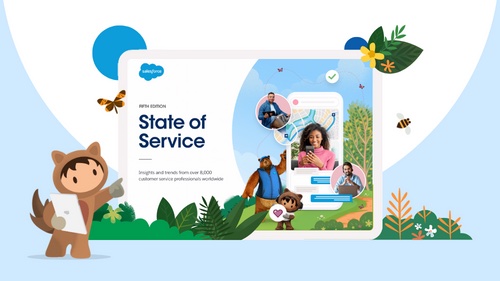
Get your FREE 30-day trial.
Start by selecting a product:
With smartphones on the rise, businesses must reconsider the service options they offer to customers. Here’s what it takes to build a truly digital customer service strategy.
In the past, consumers seeking some form of customer service would have been stuck with contacting a business by whatever the means the businesses chose to provide. Businesses used to tell us to send them a letter, so we did. Then it was faxes. Then it was phone calls. Suddenly, it became e-mail.
As time progressed we gained more options. But, we still needed to deal with the organisation on their terms because we, the customers, were the ones with the problem. We were the ones who wanted help. Whatever means of contact they offered us, we accepted.
Then, Taiwan happened. China happened. Vietnam and Thailand happened. Now I, the customer, can get the same things cheaper and sometimes better, with a bigger range of colours. So as a customer I began making decisions to go elsewhere when I didn't get what I wanted, when I wanted it and how I wanted it.
There was a power shift. The power came to me as a consumer.
Customers, armed with smartphones, are telling organisations they will not wait on hold for an hour, they will not fax through the details and they certainly won’t wait until business hours to have their problem solved. If they want it solved at 3am then that’s when it must be done.
Customer experience, our research tells us, is the only differentiator between brands in today’s highly commoditised market. The only option for businesses that wish to stand out is to be completely responsive to customer needs. That means, at the very least, going mobile.
The challenge is knowing which channel to choose to supply your mobile customer service offering. Should you go with an app or is a mobile optimised website enough? What about immediate response by SMS?
A customised app is the holy grail for both the customer and the organisation. Here’s why.
If you’re responding to SMS queries as an organisation then it is very much a reactive response. You are simply reacting to everything that is happening.
With a mobile optimised website it is similar, but you can begin to be a little bit more proactive by giving the customer the ability to self-serve. A study we conducted in Australia / New Zealand revealed that a lack of a self-service offering is the third biggest challenge facing customer service teams. So with a mobile optimised website you’re saying: ‘Here is (hopefully) everything you need to help yourself’.
Finally, mobile apps let people make the most of their micro moments: those moments where they might be waiting for a lift and they can quickly tap into an app and tick off one of their jobs for the day.
That is great for the customer. And at the same time you get to learn how your customer uses the app, when, why and where. You can learn so much about your customers that you can begin to deliver customer service to them before they realise they need it.
Maybe you know that a customer is looking at a comparison chart, deciding whether to buy the iPhone 7 or the 7 Plus. So, you can deliver a chat message that says, ‘Hey, can I help you decide?’.
Now you’re totally proactive and you’re removing friction. You’re anticipating customer need and delivering a capability. And that’s incredibly powerful in terms of your relationship with the customer.
Salesforce has an offering we call Field Service Lightning and it’s a great example of where companies can apply technology to customer experience. Imagine this:
Your washing machine has broken down and you contact the brand, maybe via an app, to organise a service. The system knows where you are so an alert automatically goes out to service people in the vicinity, but only the ones who have the knowledge and equipment to fix the issue.
The technician who is available soonest gets the job and they tap to accept, which automatically sends an SMS back to you with their details and an arrival time. You can then track them so you know you’ll be home when they arrive. It’s smooth, fast, painless and doesn’t involve waiting around for hours for a technician to show up ‘between 8am and midday’.
That’s just a small example of what such a system can do. When you use a platform that lets you integrate your mobile app with your CRM data – and it's lightning fast – you can deliver on your customers' needs at exactly the moment they arise, and on any channel the customer chooses. Now that's customer service!
To find out more about how we can help you improve your customer service, watch this two-minute Service Cloud demo.